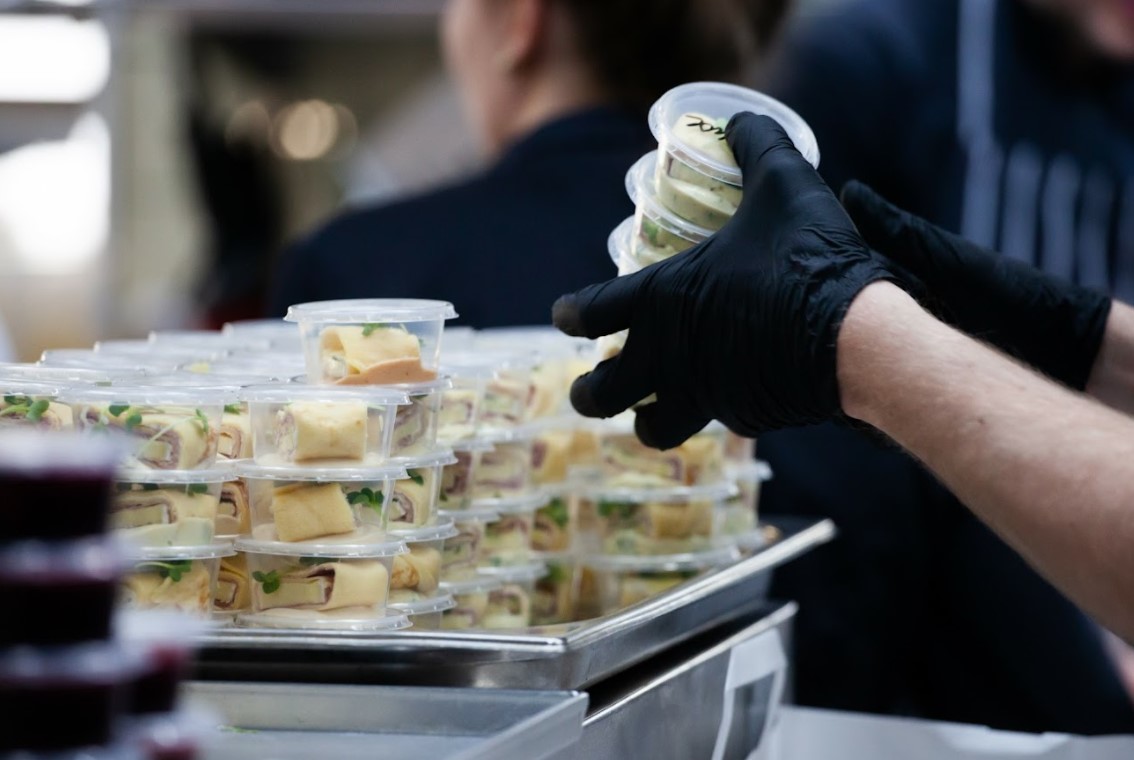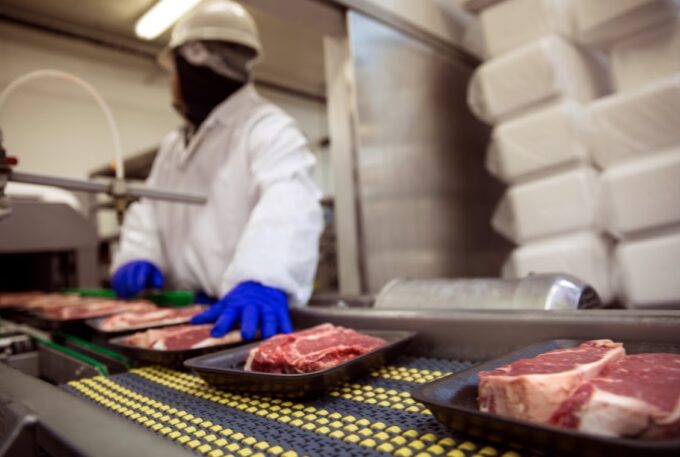Running a food business requires more than managing your bottom-line profits. Your primary responsibility is to ensure that the safety and sanitation of consumers are not threatened.
While there are numerous aspects to consider when developing a culture that prioritizes food safety and hygiene, breaching food safety standards can result in germ outbreaks and foodborne diseases.
Food safety regulations are critical for safeguarding consumer health, prolonging the shelf life of your products, and implementing risk management techniques that are effective. You must adhere to these restaurant food safety laws to ensure your guests’ safety and keep them coming back for more.
1. Establish That No Cross-Contamination Occurs
Cross-contamination is a frequent cause of food poisoning in restaurants. To avoid this, ensure that your team washes their hands, maintains clean surfaces, and appropriately separates prep stations. To do this, separate cutting boards and knives for each type of food. By that, your kitchen staff will find it much easier if you use color-coded cookware!
Assemble dishes frequently and clean all rubbish from surfaces. After clearing a station, do a quick disinfectant spray clean. Clean and organize your fridge and cabinets and adequately label and seal any products. Before preparing fruits and vegetables, properly wash them! For example, root vegetables such as leeks and carrots are more likely to retain soil residues.
Apart from basic cleaning, it is critical to do certain daily and weekly processes such as disassembling ovens, grills, stoves, inspecting mousetraps, and deep cleaning walk-ins and storage rooms. You can also use industrial food processing screens from companies like industrialscreen.com to upgrade your food processing equipment and ensure that it is safe to use.
2. Maintain A Safe Temperature For Food
Temperature Danger Zone: It ranges between 41- and 135-degrees Fahrenheit is defined as the Temperature Danger Zone. And the rapid spread of bacteria within this range can cause foodborne illness if consumed. Maintaining a safer temperature for food requires keeping perishable products from Temperature Danger Zone during preparation and storage.
It holds regardless of whether the food is warm or cold when served. Utilize heat lamps or steam tables to maintain the temperature of hot meals above or equal 135°F. Use refrigeration or food-grade ice in keeping cold food less than or equal 41°F. According to some food handlers, temperature control standards do not apply to raw items cooked to allowed temperatures later. However, this is not accurate.
You must keep all perishable products at a constant temperature for the following reasons: When bacteria reproduce, they emit spores. While germs are destroyed during the cooking process, spores can remain and create poisons that were not destroyed during the cooking phase. If you serve contaminated food, you risk exposing your consumers to foodborne illness. But how can you maintain safe temperature when you are transporting food?
If you are transporting perishable goods for your food business, you also need to maintain a safe temperature while they’re in transit. This is where using a refrigerated van comes into play. It can help keep your perishable products safe by ensuring that they reach the destination free from contamination.
Thankfully, there are several refrigerated vans to choose from for your food business. For example, the Citroen Berlingo refrigerated van can be one of the popular options you should consider. They’re an excellent transportation partner for your perishable food business.
Also, since they’re available in several sizes, you’ll never run out of space for your perishable goods that require different temperature range. When it comes to temperature consistency, using a refrigerated van for transportation can be an excellent idea since they have thicker insulation and strip curtains to avoid disturbing the temperature inside the van which can spoil the shipment.
3. Clean Drains And Monitor Water Regularly
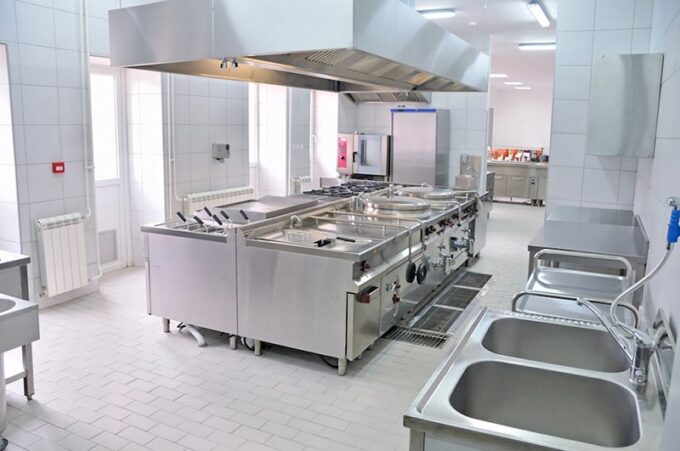
Drains are frequently overlooked due to their invisibility, but they can harbor bacteria and biofilms that contaminate previously cleansed areas. Empty your drains in advance to prevent cross-contamination during the cleaning and sanitation. Additionally, developing a weekly drain cleaning regimen may assist you in avoiding such problems.
Potable water is a critical component of sanitation, and its quality can affect the effectiveness of cleaning and sanitation solutions. For example, hard water can result in soap scum, and silicates can leave a white coating on certain items when used in conjunction with them. Conduct an annual water quality analysis at your plant and, if necessary, condition the water to the desired chemistry.
4. Put Pest Control Methods Into Action
Pest management is necessary for food safety. By contaminating food at any point during the manufacturing process, pests such as cockroaches and flies can transmit foodborne diseases. Additionally, rats spread disease and wreak havoc on structures, fixtures, and machinery.
Insects in stored products can contaminate and harm food during shipping and storage. Monitoring and detection of pests can assist in preventing them from entering a food processing facility, hence ensuring food safety compliance.
5. Utilize Warning Indications
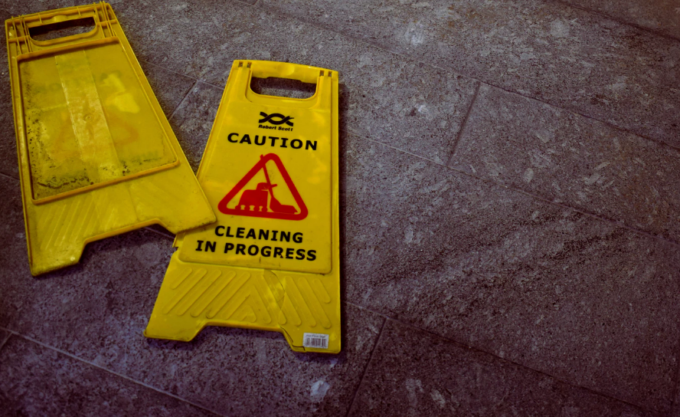
Safety indicators will assist your workers in recalling all of the critical components of food handling. Customers will almost surely notice signs posted above trash bins alerting them of the proper time, manner, and location for waste disposal at your facility.
To assist food handlers in connecting hand washing to seemingly unrelated activities, use a placard that includes ‘wash hands’ as the last step—post reminders on good handwashing in the restrooms.
Everyone must understand the need to wash their hands with warm, soapy water for at least 20 seconds. It includes cleaning between the fingernails and between the thumb and index finger.
You may also label refrigerator shelves and compartments with legible and easy-to-read labels on which they belong. For example, never display raw poultry on a top shelf where it could spill onto other dishes; instead, label a lower shelf ‘chicken’ and attach an image.
6. Maintain Proper Personal Hygiene
Proper sanitation is necessary for food safety. Food handlers who do not maintain adequate personal hygiene may taint food unintentionally. The objective is to know why each hygiene procedure is needed and perform it correctly.
Handwashing is the most critical hygiene practice. It assists in preventing cross-contamination between cleaning chemicals and food that should be kept separate throughout the day.
Showering or bathing before work, wearing a clean uniform, wearing gloves, and avoiding bringing personal belongings into the kitchen or near food are acceptable hygiene measures. These are simple efforts that add up to a significant impact on personal hygiene.
7. Train Your Personnel
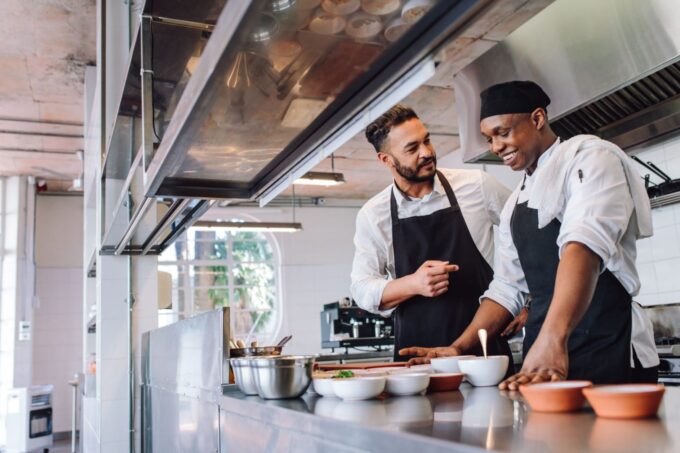
While hazard analysis and critical points (HACCP) and employee training are not required by law, food safety inspectors will nonetheless hold you to these standards. Communicating the critical nature of these restaurant food safety guidelines will be much more difficult if you have not been appropriately trained.
It is recommended that you follow these rules to comply with current food safety regulations and laws! If you haven’t had the opportunity to receive training, it may be beneficial to arrange for a teacher or a course for your team; this type of activity can also assist build team spirit.
8. Cook Food Properly And Safely
It’s important to prepare and cook food in your business properly and safely. That way, you can get rid of the bacteria that may contaminate your food, thereby causing some safety and sanitation issues for your food business. Hence, to avoid this situation, you need to thoroughly cook meats that can be a source of bacteria. These can include the chicken, products from minced meat, rolled joints, and pork.
Moreover, if one of your ingredients is a beef or lamb, make sure the surface is cooked properly to get rid of the harmful bacteria. In addition, cook the food using the appropriate temperature within the correct length of time. If you need to reheat food, make sure to do it only once.
Takeaway
Food safety is a shared issue and obligation. As the owner of the food business, you have a critical role in ensuring that food items do not cause harm to clients. Ascertain that your food products are safe for customers when prepared or consumed according to directions and that your production, handling, and manufacturing facilities adhere to cleanliness standards.

